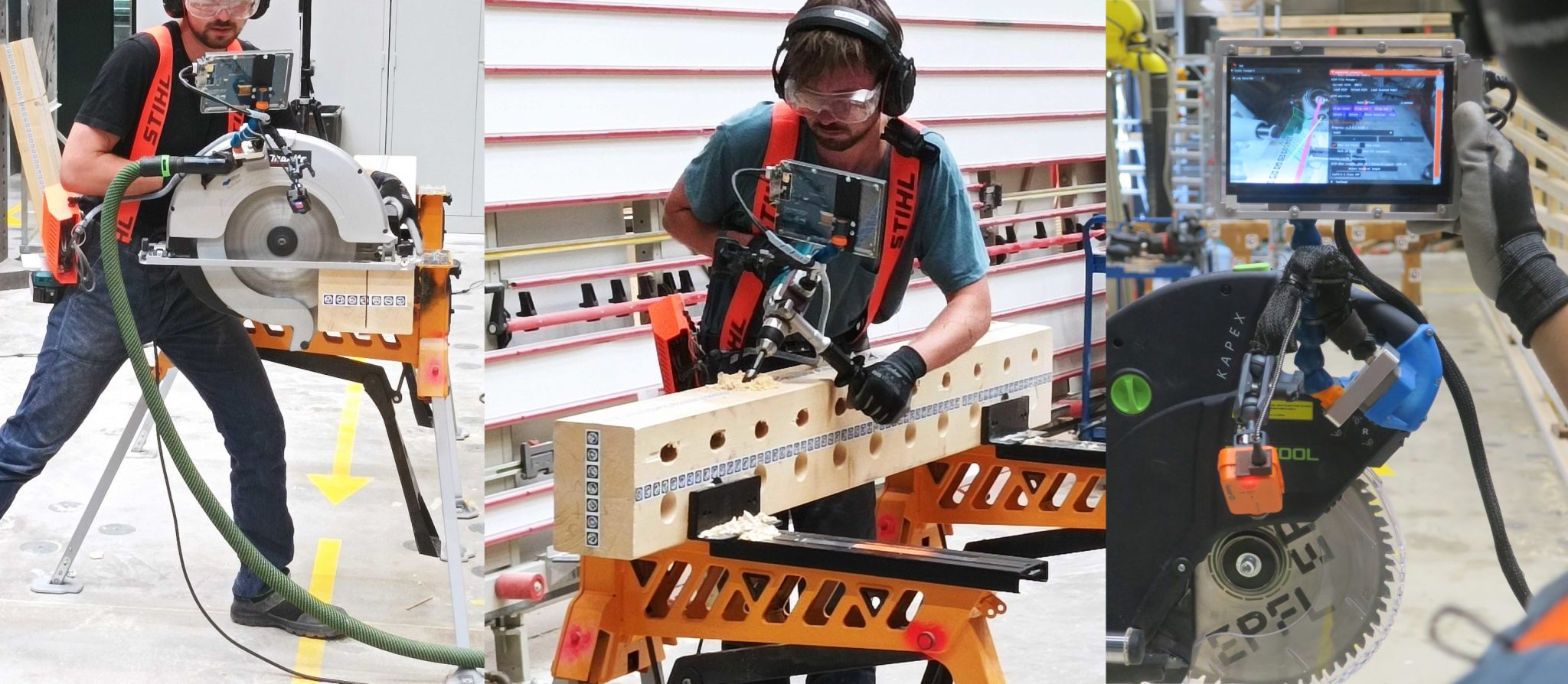RESEARCH DATA
Funding: EPFL
Status: Ongoing since 01.01.2021
PhD Candidate: Andrea Settimi, architect, EPFL
Thesis director: Prof. Yves Weinand, architect and engineer, IBOIS
Thesis co-director: Dr Julien Gamerro, Technical director, CBS-Lifeteam
RESEARCH ABSTRACT

Overview of augmented operations on different carpentry tool
As it has collectively been acknowledged, the construction industry is one of the most significant contributors to carbon emissions. Radical changes to the sector need to be addressed to avoid irreversible damage to our environment. Rapidly boosting the use of bio-sourced materials (e.g., timber) might represent an available option to respond to the urgency of reducing carbon emissions in a short period. In addition, the construction industry is also recognized as one of the least digitized sectors, still heavily relying on processes dependent on multiple actors and human workforce for most of its processes. Recently, researchers have been exponentially showing interest in a particular branch of the XR technological family applied to fabrication and construction: Augmented Reality (AR). AR has lately paved the way for more hybrid technological formats to profit from human dexterity and digital computation in manual processes. These digital manufacturing methods leverage existing human resources to digitize construction at a low-budget investment in exchange for a high-efficiency payoff and faster implementation. Human dexterity and cognition are coupled with machine-like analytics to obtain hybrid methods where human operators are kept in the digital loop, not by contingency but necessity.
Recordings of an augmented fabrication operations.
Differently from previous developments mainly in augmented additive tasks, the research will focus on contemporary subtractive wood-working operations and the integration of intelligent, ordinary manual tools in augmented frameworks for modern carpentry techniques. The aim of the research is to show how execution shop drawings, and physical jigs in woodworking can be replaced all at once by an augmented wood-working framework able to guide workers through complex subtractive fabrication with embedded sensing systems and computer-processed feedbacks.
Augmented Carpentry is meant to structure the development of widely accessible construction processes for timber materials. Human operators, independently from their origin and knowledge in carpentry, occupy the new digital fabrication shift. Before only possible with robots, the fabrication of complex geometries and designs will also be accessible to a broader public without disposing of expensive industrial equipment. By exploring human-machine collaboration in modern carpentry and design of timber construction, Augmented Carpentry can contribute in keeping the human element in the loop allowing more socially sustainable, regional, and digital fabrication in timber construction.